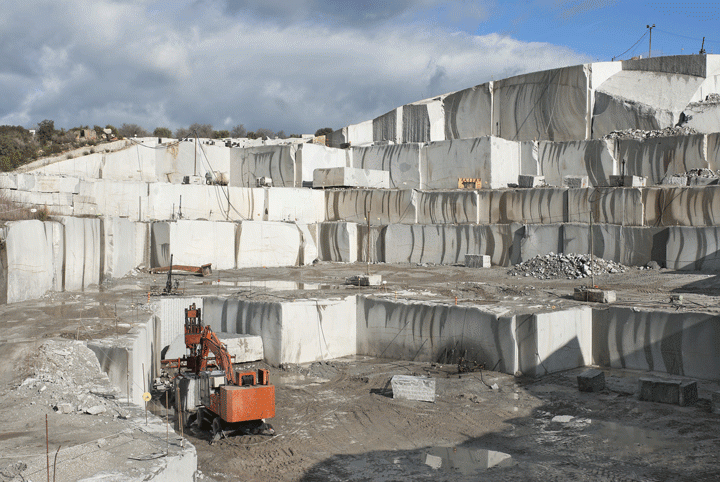The Covert Treasures: Discovering Granite Quarries in South Africa
The Covert Treasures: Discovering Granite Quarries in South Africa
Blog Article
Revealing the Mysteries of Granite Quarrying: Where Strength and Sophistication Meet
The globe of granite quarrying is a realm where the raw strength of nature assembles with human artistry to develop structures that stand the test of time with an air of sophistication. From the midsts of quarries to the precise sprucing up in workshops, the process of changing granite into architectural wonders is a complicated dancing of custom and advancement. As we peer right into the depths of this old craft, we begin to discover the hidden ins and outs that shape the very essence of our developed atmosphere.
The Beginnings of Granite Quarrying
In the record of building history, the origins of granite quarrying are shrouded in a tapestry of old craftsmanship and geological wonders. Going back to old Egypt and Mesopotamia, the extraction of granite from quarries noted the beginning of a trip that would at some point lead to the creation of some of the globe's most iconic frameworks.
Granite quarrying's origins can be mapped to the proficient artisans who recognized the stone's longevity and aesthetic charm. Via a combination of primitive devices and sheer decision, these early quarry employees unearthed granite blocks that would certainly become the foundation of worlds.
As people developed, so did the techniques of quarrying granite. The Romans, renowned for their design prowess, established sophisticated techniques for extracting granite to construct monoliths, temples, and roadways that stood the examination of time.
The legacy of these ancient quarrying practices remains to form contemporary design, with granite remaining a sign of stamina and elegance in construction tasks around the world. (granite quarries in south africa)
Tools of the Quarrying Trade
The evolution of granite quarrying techniques from ancient people to contemporary times highlights the essential role played by the devices of the quarrying profession in forming the sector's practices. In ancient times, quarrying devices were basic, frequently being composed of blades, hammers, and wedges made from materials like bronze or iron. These tools called for substantial manpower and time to extract granite obstructs from quarries.

Additionally, here are the findings the intro of pneumatic devices and high-powered machinery has actually considerably reduced the physical labor called for in quarrying operations, enhancing employee safety and security and efficiency. As the quarrying sector continues to innovate, the devices of the trade stay at the forefront of driving progress and shaping the future of granite extraction.
Drawing Out Blocks of Granite
Utilizing precision machinery and progressed techniques, the removal of granite obstructs from quarries has come to be an advanced procedure in the modern quarrying industry. Managed blasting techniques are then used to damage apart the granite right into convenient areas.

Sprucing Up and Finishing Strategies
To achieve a flawless surface area on granite blocks, proficient artisans use a series of meticulous polishing and finishing strategies. After the preliminary removal and forming processes, the granite obstructs undertake a comprehensive sprucing up phase to boost their all-natural beauty and longevity.
In enhancement to polishing, finishing techniques are used to more fine-tune the granite's appearance. By meticulously choosing and applying these brightening and completing methods, artisans can change raw granite blocks right into elegant items that display both toughness and sophistication.

Environmental Impact and Sustainability
With the growing emphasis on environmental awareness in the market, granite quarrying methods are progressively looked at for their effect on natural resources and lasting sustainability. Furthermore, the transport of granite from quarries to refining centers produces carbon discharges, further adding to environmental destruction.
To mitigate these impacts and make certain sustainability in helpful resources granite quarrying, industry stakeholders are taking on different actions. Executing advanced innovations to lower power usage and water use, redeeming quarried land for environmental remediation, and advertising responsible sourcing methods are some techniques being employed. Furthermore, accreditations such as the Forest Stewardship Council (FSC) and the Leadership in Power Find Out More and Environmental Design (LEED) assistance consumers recognize ecologically friendly granite products.
Verdict
To conclude, granite quarrying is a process that requires specialized devices and techniques to essence blocks of granite and polish them to a high degree of coating. While the ecological impact of quarrying can be considerable, efforts are being made to boost sustainability techniques in the sector. On the whole, granite quarrying is a fragile equilibrium between harnessing the stamina and sophistication of this natural rock while reducing its influence on the setting.
Report this page